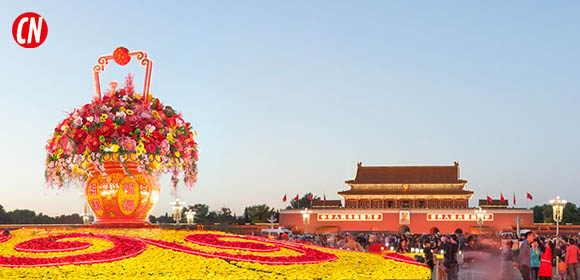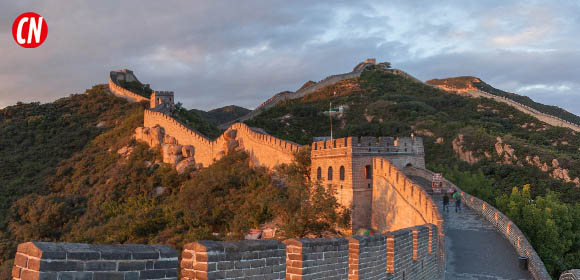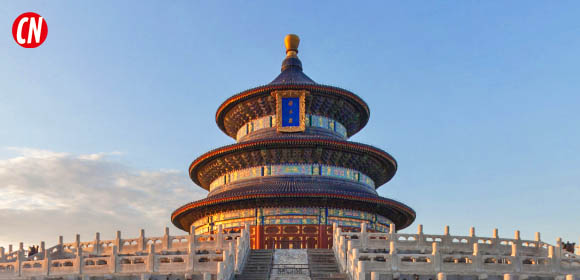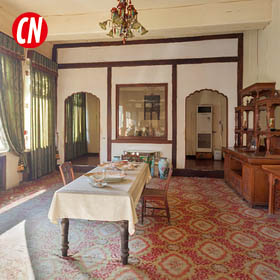
Beijing is an ancient cultural capital with a long history and is the political and cultural center of China, with endless historical heritage and relics.
Strategic Location in Ancient Times
Beijing, known as Yanjing and Youzhou in ancient times, was a major stronghold of the military in the north, and the “Sixteen Provinces of Yan and Yun” were the battlegrounds of the warlords. In order to defend against the invasion of nomad tribes outside the border, the most famous fortification in the history of mankind – the Great Wall was born. The four gates of the Imperial City, the nine gates of the inner city and the seven gates of the outer city all work together to build this unbreakable historical city, of which Tiananmen Gate and Qianmen Gate are still the most famous sightseeing spots in Beijing today.

Tiananmen Square
The Heart of China
Located in the heart of Beijing, Tiananmen Square is the largest city square in the world. Within the square are landmarks such as Tiananmen Gate, the Monument to the People's Heroes and the Memorial Hall of Chairman Mao. In Every morning and evening, solemn ceremonies of raising and lowering the national flag is held in the square.

Great Wall At Badaling
Northern Gate of Capital Beijing
Badaling is located at the northern entrance of the Juyongguan Pass in northwest Beijing, and has been a military stronghold for soldiers throughout the ages. Built in the Ming Dynasty, the Badaling Great Wall is the earliest section of the Great Wall open to visitors, and the most majestic and complete section, too.
The Political Center of the Ming and Qing Dynasties
After Zhu Di, the third Emperor of the Ming Dynasty, moved the national capital from Nanjing to Beijing, Beijing became the political and cultural center of the country. The Ming and Qing governments built the Forbidden City (Palace Museum), the royal gardens of Beihai, Jingshan and Summer Palace, the Temple of Heaven for worship ceremonies, and the Thirteen Tombs of the Ming Dynasty.

The Palace Museum / The Forbidden City
Sea of Palaces
The Forbidden City Museum, the very political hub of China for the last six hundred years, was a royal palace during the Ming and Qing Dynasties, where 24 emperors lived and ruled.

Temple Of Heaven
Symbol of Beijing
In ancient times, the Temple of Heaven was a place of worship for the emperor to offer sacrifices to the heavens and pray for a good harvest. As the symbol of Beijing, the Temple of Heaven has now been selected as a World Heritage Site.

Summer Palace
Crown Jewel of Chinese Gardens
The Summer Palace (颐和园), formerly known as the "Garden of Clear Ripples (清漪园)", was destroyed by the British and French allied forces in 1860, and the Summer Palace seen today was rebuilt to celebrate the birthday of Dowager Cixi. With Kunming Lake (昆明湖) and Longevity Hill (万寿山) at its core, the Summer Palace combines the beauty of the southern China attractions in one garden. You can enjoy a panoramic view from the Tower of Buddhist Incense (佛香阁).
City Symbols of Beijing
The Forbidden City, the Great Wall, the Temple of Heaven… These thousand-year architectural marvels have become things of the past, and the ever-changing city of Beijing seems to grow new branches every day, recording its uninterrupted evolution.

Beijing Olympic Park
Unforgettable 2008
The Olympic Green is located along the northern part of Beijing's central axis and is the central area for the 2008 Beijing Olympic Games. It not only has important Olympic venues such as the Bird's Nest and the Water Cube, but also has auxiliary facilities and venues such as the Linglong Tower, the Sunken Garden, and the Olympic Forest Park.
Shopping and Leisure in Beijing
Beijing has one of the highest levels of consumption in the country, with large integrated business districts and pedestrian streets filled with fashion brands and famous restaurants from around the world.










































